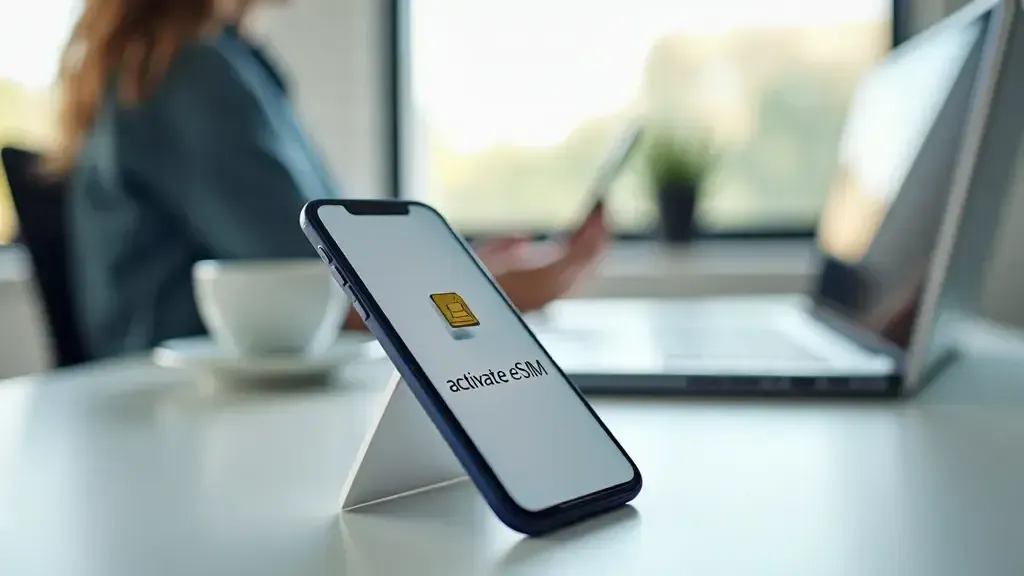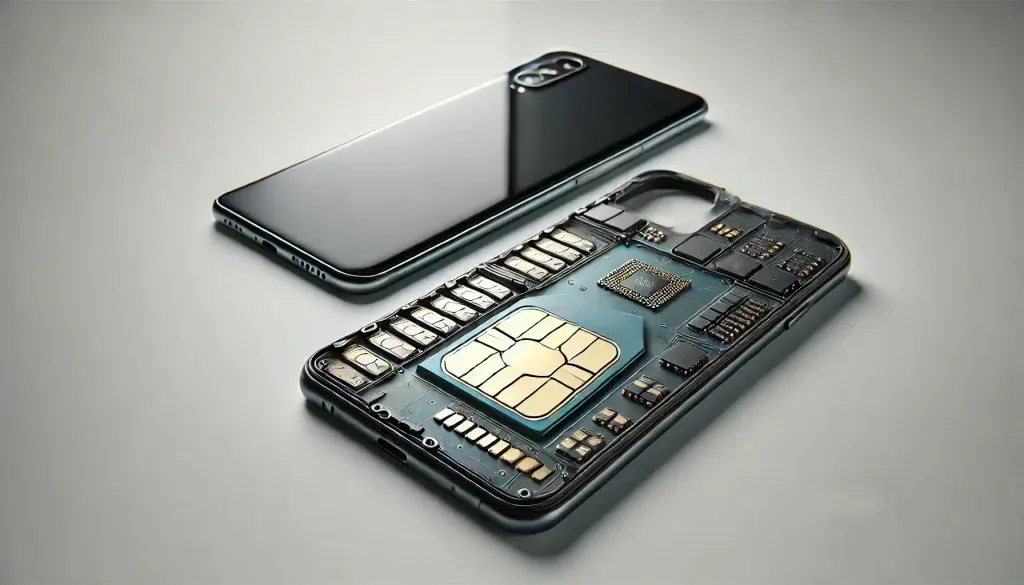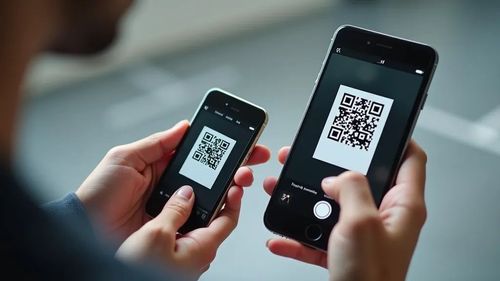Switching from a physical SIM to an eSIM is a major upgrade. It offers more flexibility and convenience. With an eSIM, you can easily switch carriers, manage multiple plans, and enjoy a smoother mobile experience. This article will guide you through converting your SIM to an eSIM and explain why eSIM is the future of mobile connectivity.

In this article:
- What is an eSIM and How Does It Work?
- Benefits of Switching to an eSIM
- Step-by-Step Guide to Converting Your Physical SIM to an eSIM
- Device Compatibility: Is Your Phone Ready for an eSIM?
- Common Issues and Troubleshooting Tips
- Frequently Asked Questions About eSIMs
What is an eSIM and How Does It Work?
In the fast-moving digital world of today, staying connected is important. As such, the start of eSIM technology makes our mobile devices a bit more easier and flexible. But exactly what is an eSIM? Also, how does it differ from the regular SIM card? We explain everything you need to know about eSIM tech. Specifically, we cover how to convert your SIM to eSIM and also why to switch to eSIM.
Related: What Is An eSIM Card And How Do They Work? #YohoGuides
Introduction to eSIM Technology
eSIM stands for “embedded SIM,” a small chip being built into a device like your smartphone, tablet, or even smartwatch. These chips work totally differently from the regular SIMs, which require you to insert them into the phone. Instead, it lets you start your mobile plan by scanning a QR code or following your carrier’s starting process. Thus, there is no need to use a physical SIM card.

This digital revolution has definitely made mobile connectivity easier. With the eSIM, there will no longer be any physical changes of SIM cards when changing carriers or plans. It is all electronic, and the process is quicker, easier, and more fitting for modern-day needs.
Differences Between Physical SIM and eSIM
The difference between a standard SIM and an eSIM is mostly physical. Whereas regular SIMs are small plastic cards inserted into your phone, eSIMs are built-in. So, it means no more losing your SIM cards or damaging them during handling.
Furthermore, another advantage of eSIMs is that they can store multiple carrier profiles on one chip. This basically removes the trouble of swapping physical cards to switch carriers, especially helpful for people who travel often and may need several phone numbers or mobile plans.
Benefits of Switching to an eSIM
Flexibility and Convenience
One of the key reasons people would wish to make a switch from a SIM to an eSIM is freedom. Unlike having many SIM cards, you can manage multiple phone numbers on the same device. So, it makes life easy for those with personal and work numbers. Additionally, it’s good for people who travel often and want to avoid high roaming charges.
Multiple Plans on One Device
eSIM allows users to store multiple mobile plans on one device. In other words, one can immediately switch between carriers or plans whenever the need comes up, without having to change his or her SIM card. For example, you can use one for regular calls and another for data while traveling internationally. Thus, this saves money and is easier.
Easy International Travel Management
For those who travel often across countries, this is where switching to an eSIM can make life much easier. No longer will you need to search for local SIM cards in some foreign country! You can now switch to a new plan or a local carrier in the country you visit. Also, you can do this directly from your phone without removing or inserting anything. This will not only save you time but also allow better access to mobile services with the locals.

What Are the Disadvantages of eSIM?
While eSIM technology surely has a lot of advantages, one must also be aware of its disadvantages. For instance, the first downside is that not all carriers support eSIMs, and some still insist on using a regular SIM. Also, not every device supports eSIMs. An eSIM transfer is more complicated than just popping in a different card, especially if one often changes phones or lends their device to someone else.
Step-by-Step Guide to Converting Your Physical SIM to an eSIM
Now that we have understood what an eSIM is and its advantages, how do you convert your physical SIM into an eSIM? In fact, this process is easier than you may think. We will guide you through the steps to do it on both iPhone and Android devices.

Prepare Your Device for Conversion
First of all, you will need to check if your device is eSIM-ready before changing your physical SIM to eSIM. You can ask your phone manufacturer or carrier about this. Secondly, it’s wise to prepare a backup of all your important data in advance. Although the process for changing it into eSIM is relatively safe, it’s always good to keep a backup of your contacts, messages, and files.
Instructions for iPhone Users
Open the Settings application on your iPhone. Tap “Cellular” or “Mobile Data.” Select “Add Cellular Plan.” Under Carrier or Activation Code, if your carrier has provided a QR code, scan it using your phone’s camera—or enter it manually. Follow the instructions on the screen to finish the setup. Here is a more detailed guide in case you want to take a look at it.
Instructions for Android Users
Open the “Settings” application on your Android device. Tap “Connections” or “Network & Internet,” depending on your model. Click “SIM card manager” or “Mobile Network.” Click on “Add Mobile Plan,” then scan the QR code provided by your wireless carrier or enter an activation code. Confirm your setup and start enjoying your eSIM service!
Device Compatibility: Is Your Phone Ready for an eSIM?
Some phones don’t support eSIM technology, so first and foremost, it is important to see if your device can run on eSIM before doing the change. Generally, this includes the latest iPhones and a lot of recent high-end Android devices. However, you can check tools like a list of eSIM-compatible devices. It will check if your phone is ready for an eSIM.
![]()
Common Issues and Troubleshooting Tips
Although the switch to eSIM is fairly smooth, there may be bumps along your journey. Here are a few of them, along with their fixing tips.
Resolve Activation Problems
First, in case of a failed eSIM starting process, one should find out whether the phone supports an eSIM. Also, check compatibility with your tech provider. Make sure to check again that you have written everything correctly, including the plan name. Sometimes, simply restarting your phone solves some minor problems when starting eSIM. If the problems continue, the solution may be to install the eSIM profile again or to contact your carrier.
Contact Customer Support for Assistance
If fixing cannot solve the issue, then the next step is to call customer support. Customer support for most mobile carriers is available over the phone, via live chat, or with in-store service. Just make sure to clearly explain your problem, and they should help you with more steps toward successful eSIM starting.
Frequently Asked Questions About eSIMs
eSIM vs. physical SIM: Which is better?
Each has different advantages and disadvantages. While eSIM offers more flexibility and convenience, it makes swapping physical SIMs between devices easier.
Is converting to eSIM a good idea?
Yes, eSIM is good for users who want flexibility. Also, it makes international travel easier.
Why is eSIM not popular?
The technology is relatively new, and many people are still unaware of its existence. Furthermore, eSIM is not fully supported by all devices and carriers.
Can I switch back and forth between eSIM and SIM?
Yes, it is possible, depending on your device. However, not every phone has the capability to switch between the eSIM and physical SIM.
Can you convert eSIM back to physical SIM?
Some carriers do allow you to revert back to a physical SIM card if that is what you prefer; you’ll have to check with your carrier for the procedure.
Conclusion
Switching from a physical SIM to an eSIM offers great conveniences. This is especially true for those with multiple mobile plans or frequent travelers. Also, it is relatively easy to convert your SIM to eSIM; just make sure your device is compatible and that your carrier supports it. Although the reception of eSIM technology is still growing, its benefits are too noticeable to ignore.
